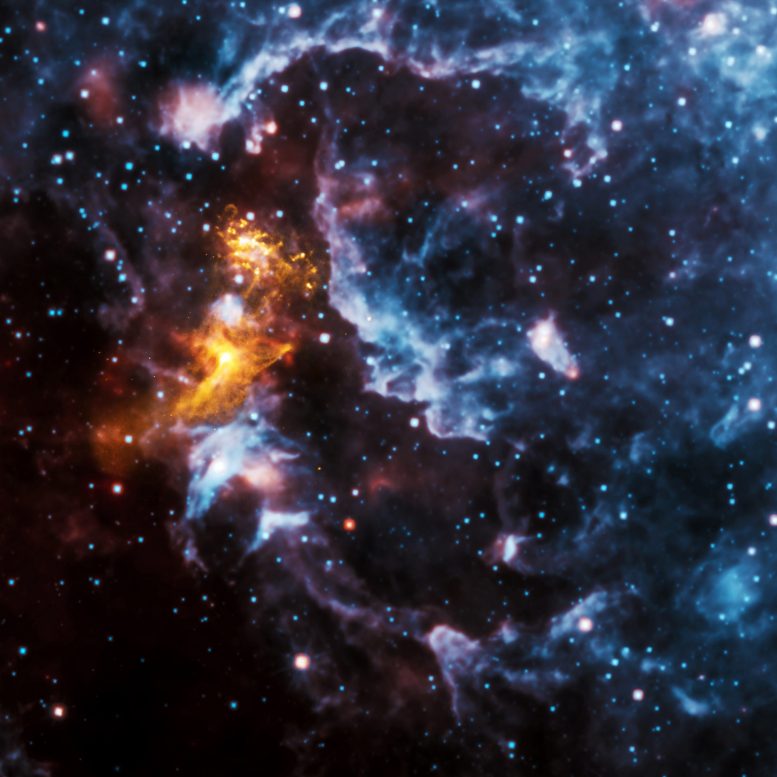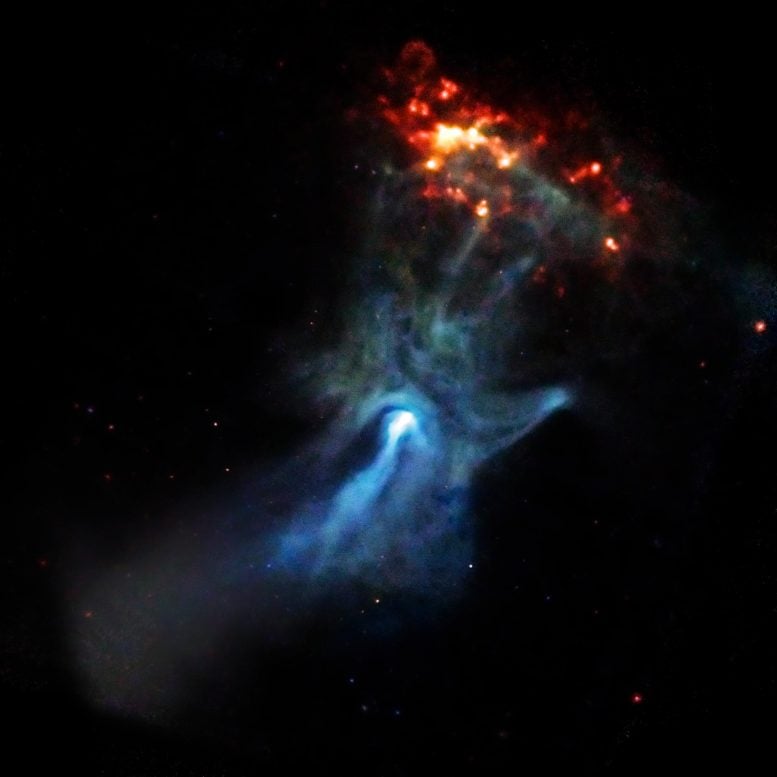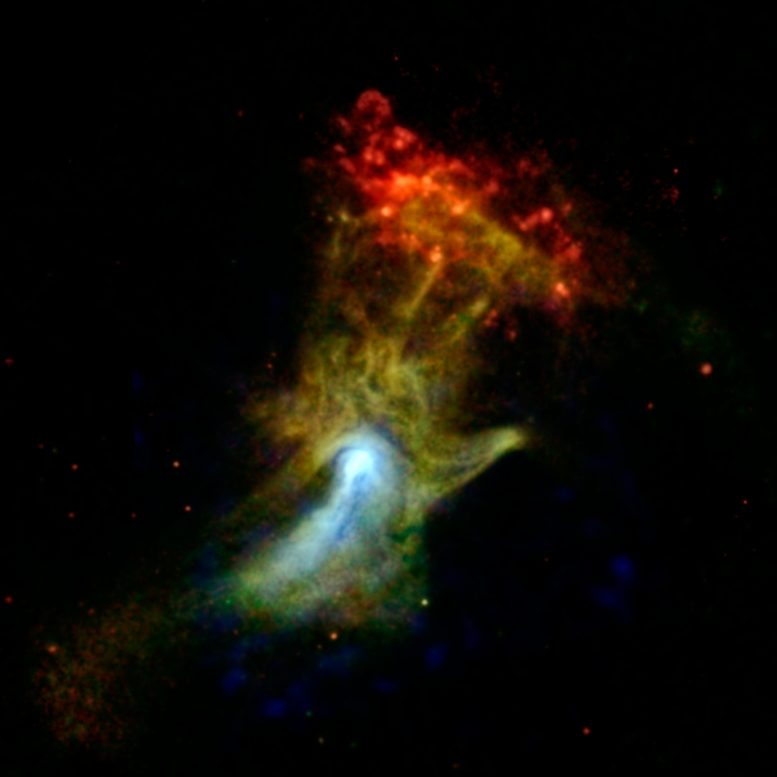
First released in 2009, this Chandra image shows PSR B1509-58 – a spinning neutron star surrounded by a cloud of energetic particles. Credit: X-ray: NASA/CXC/SAO; Infrared: NASA/JPL-Caltech
What is pareidolia? It is the psychological phenomenon where we see recognizable shapes in clouds, rock formations, or otherwise unrelated objects or data.
When an image from NASA’s Chandra X-ray Observatory of PSR B1509-58 – a spinning neutron star surrounded by a cloud of energetic particles about 17,000 light-years from Earth – was released in 2009, it quickly gained attention because many saw a hand-like structure in the X-ray emission.

A small, dense object only twelve miles in diameter is responsible for this beautiful X-ray nebula that spans 150 light years. At the center of this image made by NASA’s Chandra X-ray Observatory is a very young and powerful pulsar, known as PSR B1509-58, or B1509 for short. The pulsar is a rapidly spinning neutron star which is spewing energy out into the space around it to create complex and intriguing structures, including one that resembles a large cosmic hand. Credit: NASA/CXC/SAO/P.Slane, et al.
In this image of the system, X-rays from Chandra in gold are seen along with infrared data from NASA’s Wide-field Infrared Survey Explorer (WISE) telescope in red, green and blue. Pareidolia may strike again as some people report seeing a shape of a face in WISE’s infrared data. What do you see?
NASA’s Nuclear Spectroscopic Telescope Array, or NuSTAR, also took a picture (below) of the neutron star nebula in 2014, using higher-energy X-rays than Chandra.

The hand might look like an X-ray from the doctor’s office, but it is actually a cloud of material ejected from a star that exploded. NASA’s Nuclear Spectroscopic Telescope Array, or NuSTAR, has imaged the structure in high-energy X-rays for the first time, shown in blue. Lower-energy X-ray light previously detected by NASA’s Chandra X-ray Observatory is shown in green and red. Credit: NASA/JPL-Caltech/McGill








 User Center
User Center My Training Class
My Training Class Feedback
Feedback












Comments
Something to say?
Log in or Sign up for free